Every mother can knit beautiful socks for her child, even if she has just recently picked up knitting needles and does not understand how to work with patterns. It is important to show diligence and attentiveness.
Selection of yarn and knitting needles
At the beginning of the work you should prepare the materials:
- yarn;
- additional thread (to strengthen the heel);
- knitting needles;
- scissors;
- centimeter (ruler);
- a pin for removing stitches;
- a needle and sewing thread (only when working with 2 knitting needles);
- pattern diagram.
When choosing threads, it is necessary to take into account the composition - the convenience of the product and its durability depend on it.
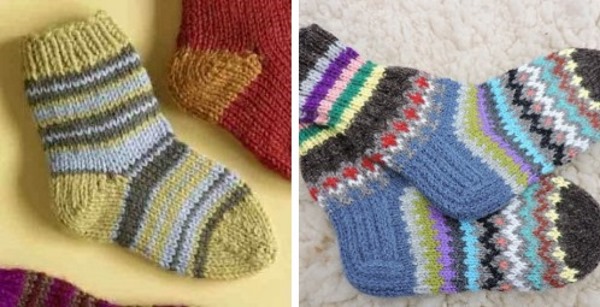
The following varieties are used for children's things:
- Acrylic. It is characterized by low cost and durability. It does not cause allergies. Among the disadvantages are low absorption, it is more rigid than natural fibers.
- Cotton. The most durable of all types of yarn, but the least warm. It is advisable to use it for knitting summer models of children's socks with openwork patterns.
- Merino wool. It is exceptionally soft, warms well, but does not evaporate. It is able to absorb moisture during excessive sweating, keeping feet dry and warm. The main disadvantages are the cost and the likelihood of shrinkage after washing.
It is worth considering the type of yarn when choosing knitting needles:
- metal ones are suitable for acrylic and wool;
- wooden - for slippery yarn (silk, viscose) or beautiful patterns with air loops;
- plastic - universal.
The thickness of the knitting needles (No.) affects the knitting density. It should be 1 mm thicker than the yarn. If the thread is too fluffy, then 2-3 mm, not counting the pile.

The type of knitting needles depends on the method of knitting socks:
- When working with 2 knitting needles (circular or straight), the finished product will have to be sewn.
- When knitting seamlessly in a circle, use stocking needles. The set includes 5 pcs. The loops are distributed into 4, the 5th is the working one. The optimal length is 15 cm, the thickness is determined by the desired density of the pattern (3-8 mm).
Patterns or designs are not always used when knitting socks with knitting needles. Beautiful products are also obtained with a skillful combination of elastic with the front surface. More complex patterns and designs should be used when the basic principles of knitting socks have been mastered.
Working with diagrams is not difficult - the main thing is to read them correctly;:
- if it is a drawing - 1 square equals 1 p.;
- The patterns are accompanied by symbols indicating what each sign on the diagram means.
How to calculate the number of stitches for knitting a sock
To ensure that socks fit comfortably on a child's foot, it is important to correctly calculate the number of loops.
There are 3 options on how to do this:
- Use ready-made tables of correspondence between age and the number of stitches to cast on.
| Age | 3-4 years | 5-6 years |
| Set (number of loops) | 24*0*24 | 26*0*26 |
| Cuff (rows) | 20 | 20 |
| Pagolenok (rows) | 15 | 15 |
| Heel | 7*10*7 | 8*10*8 |
| Foot (rows) | 18 | 26 |
| Toe | 7*10*7 | 8*10*8 |
- Find a master class that describes the stages of work in detail and indicates age-appropriate sizes.
- Do the calculations yourself.
The latter option is preferable, as it takes into account the individual characteristics of the baby’s foot. It is suitable for socks that are no higher than mid-calf.
To calculate you need to know:
- circumference of the child's instep (A);
- ankle circumference (B);
- density of the product (how many loops are in 1 cm) - a sample of the working pattern is knitted and measured.
Between the 1st and 2nd parameters is the arithmetic mean (A+B)/2. This is necessary so that the foot in the area of the instep freely passes into the finished sock, but it fits the ankle sufficiently. The obtained result is multiplied by the 3rd parameter to find out how many loops need to be cast on at the beginning.
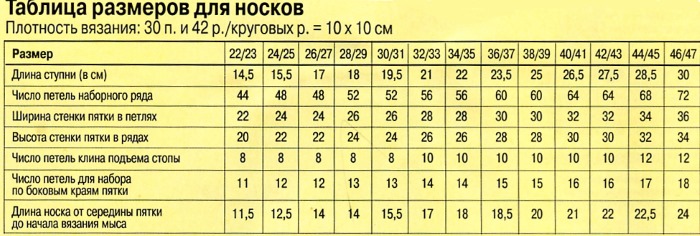
When working with double-pointed needles, the resulting number should be a multiple of 4. If necessary, round up. When knitting on 2 needles seamlessly, half of the loops are cast on at the beginning of the work.
For example, a 6-month-old baby has a foot circumference of 18 cm and an ankle circumference of 13 cm. 2 sts fit into 1 cm of the selected pattern. It turns out: (18+13)/2 x 2 = 15.2 x 2 = 31 sts, for convenience, the result is rounded to 32. This method is used to calculate the number of loops for socks for children of any age, as well as adults.
Technique of knitting wool socks
Any sock, regardless of its manufacturing method and model, has an identical “anatomy”:
- cuff or bootleg (fits around the ankle);
- bootleg (space before the beginning of the heel);
- heel;
- foot rise;
- midfoot;
- toe (sock).
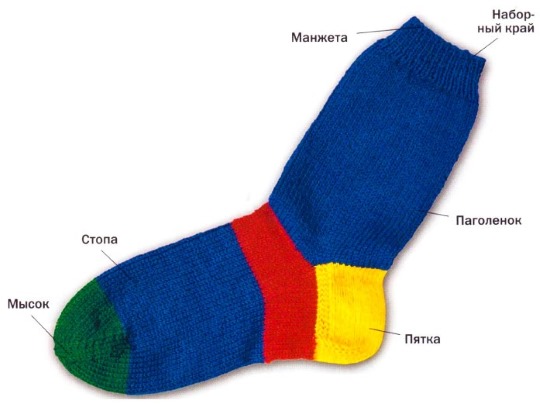
There are 2 main methods of knitting socks with knitting needles:
- with side seam (2 needles);
- seamless in the circle (5 needles).
When knitting any model of woolen socks on 2 knitting needles with subsequent sewing, the sequence of work is as follows:
- Cuff (2-5 cm). The optimal choice of pattern is “1x1 elastic” or “2x2 elastic”.
- Pagolenok. It is made with an elastic band or a working pattern. For children under 3 years old, the length of the bootleg and the bootleg is 8 cm. Depending on the size of the 1st element, the 2nd one decreases or increases.
- Heel. Half of the loops are used for it (if their number is not a multiple of 3, round up). The non-working part is removed to a pin (for the 2nd sock, the loops are distributed symmetrically in the opposite direction). The working half should be knitted 3-4 cm with the chosen pattern (for children under one year - 2-3 cm) and divided into 3 more parts. The 1st (thrown onto another knitting needle) and 3rd thirds of the fabric are not knitted.
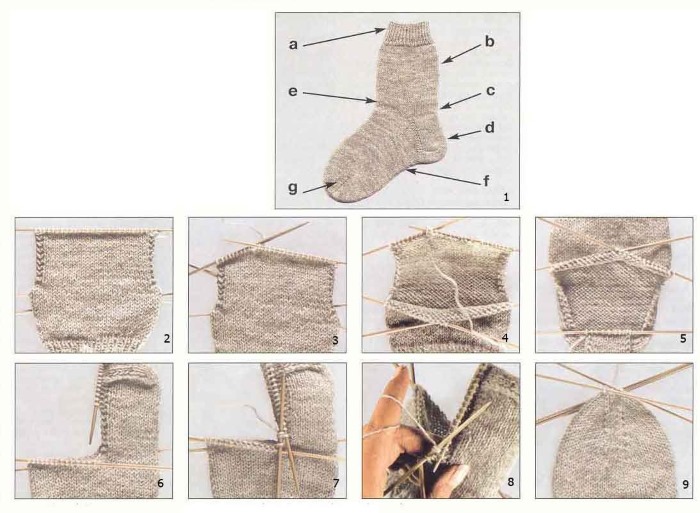
Only the middle part is knitted. At the end of each row, 1 st is picked up for it from the side thirds and knitted together with the latter, according to the pattern scheme. When only the loops of the central third remain, the working thread is cut off and attached to the side. The heel is ready. To increase its strength, you can knit it with an additional thread.
- Instep and midfoot. To work with this part, you need to gather all the loops together. The required third of new loops (instead of closed ones) are collected along the edge loops, the central part is knitted and the third third is collected from the edge loops again. The loops from the pin are returned to work, and the fabric is knitted according to the pattern 5-7 cm (depending on the age of the baby).
- The toe, like the heel, is the area most prone to tearing. It can also be strengthened. In this detail, you need to make smooth bevels. To do this, the first 2 rows are knitted without changes. Reductions begin with the 3rd row (front part of the work). They are made in each row after and before the edge (2 sts. draw through) and in the center of the work (2 times 2 sts.). Knitting ends when 16-18 sts remain.
The method of knitting children's socks on stocking needles is similar to the previous one, but has its own peculiarities:
- all rows are knit;
- no edges;
- after casting on the stitches, they are distributed onto 4 knitting needles and knitting is done in a circle;
- when working with the heel, only 2 knitting needles are used;
- when forming the toe, decreases are made in all subsequent rows by 1 st on each needle until 4 sts remain. The cut working thread is threaded through them and pulled into a knot.
The method is used for socks with intricate patterns and designs.
Master class "Knitting socks with knitting needles "with a braid""
This method of seamless knitting on 2 needles is relatively new, as is the resulting design of the product. This method differs in the order of work: from the bootleg to the toe and back. First, the sole with the heel is knitted, then the upper part of the product. At the joints on the sides, 2 braids are formed, for which the method was called "with a braid".
Beautiful socks with knitting needles (with or without patterns) can be knitted using this method. This master class shows how to do this for a 2-year-old baby.
You will need:
- scissors;
- knitting needles No. 3;
- yarn of 2 colors (acrylic and wool 50/50) - green and yellow 50 g.
Patterns used:
- "1 x 1 elastic" for the bootleg;

- plain front stitch (heel, toe, bootleg);
- two-color front surface with stripes of 2 rows each (middle part of the foot).
When calculating the number of loops, the resulting number (44) must be divided in half.
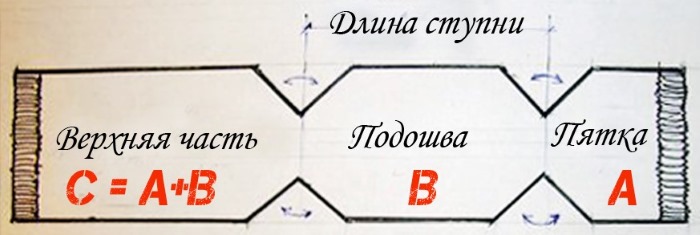
The work consists of the following steps:
- Cast on stitches (22) with green yarn.
- Knitting the back part of the bootleg (4 cm) with a 1x1 elastic pattern.
- Knit the back part of the bootleg with the front surface (4 cm) using yellow threads.
- When forming the heel, the yarn color changes again. To design the detail, at the beginning and end of each front row, you need to decrease 1 st (knit 2 sts together after/before the edge sts). The decrease continues until 12 sts.
- To add volume to the heel, you need to symmetrically add loops from the edge knitted rows (in each front row, hook 1 st from both edge rows of the lower row and knit them). As soon as the number of loops reaches the initial (22), the heel is ready.
- The middle part of the foot (sole) is knitted in two-color stocking stitch with stripes (8 cm).
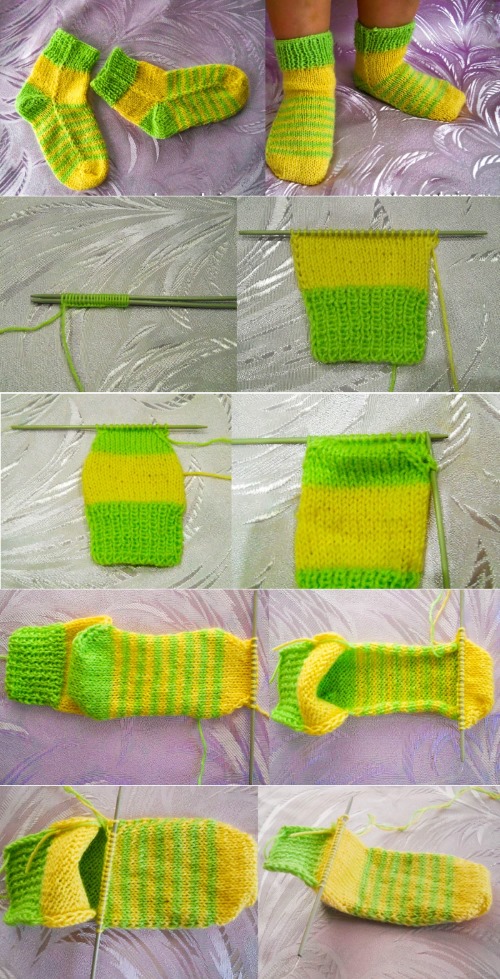
- The toe is formed according to the same principle as the heel - decrease to 12 sts with further increase to 22 sts. This part is knitted in a single-color yellow stocking stitch.
- The instep is knitted similarly to the sole (8 cm). However, the edge stitches in each front row are knitted together with the edge stitches of the lower part, “sewing” the parts together. The number of stitches does not change.
- The front parts of the bootleg and elastic are knitted in the same color and way as the back parts (4+4 cm), “sewn on” by knitting edge loops.
- In the last row of the elastic, the loops need to be closed and the thread secured on the wrong side.
- The second sock is knitted in the same way.
Master class "Lace socks for girls with knitting needles"
Socks should be both practical and elegant. Especially for girls. The best way to achieve this is to decorate them with openwork patterns on the bootleg. It is worth knitting such socks on double-pointed needles - the seams will not spoil the pattern.

Even beginners can knit elegant socks for a 1.5-2 year old girl with an “openwork diamond” pattern in 1-2 evenings.
For this you will need the following materials:
- 50 g yarn;
- double pointed needles No. 3;
- needle.
- Working patterns:
- "1x1 elastic" for the cuff;
- stockinette stitch;
- "openwork diamonds" (report 16 rows).
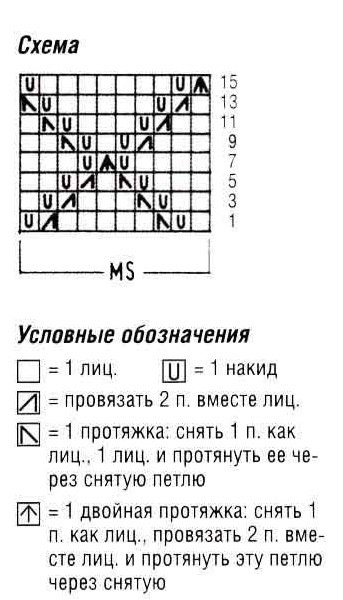 Stages:
Stages:
- Cast on stitches (40) and distribute evenly across the needles.
- Making a cuff (3 cm).
- Knitting a bootleg using the “openwork diamonds” pattern (8 cm).
- Working on:
- heel (21 sts, height of the middle third 4 cm),
- the instep and the middle part of the foot (6 cm),
— the toe (decreases by 1 st on the needle in each row) is done with the front surface.
- When there are 4 sts left, they should be closed and the end of the thread should be secured from the wrong side.
- The finished product can be decorated with a ribbon.
Decorative buttons, beads and small elements are not used to decorate socks for children under 3 years old. The child may tear them off and swallow them.
Colorful openwork socks
Beautiful socks can be knitted with knitting needles (with patterns of single-color patterns) using yarn of several colors. This will allow you to diversify them, create new models, and also make the process of putting them on easier. If the heel is different in color or decor, the baby will find it faster or notice when the sock is put on incorrectly.
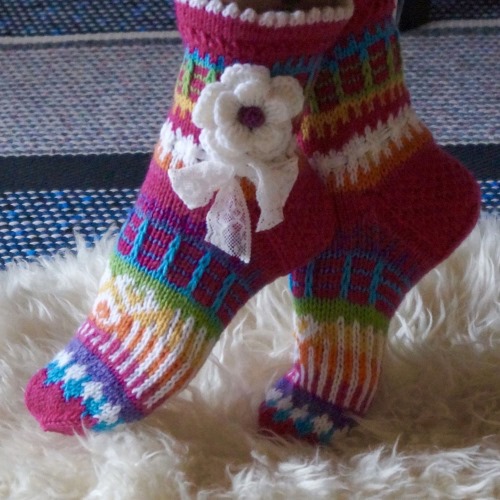
The following methods of “coloring” openwork patterns are common:
- knit the heel, cuff and toe with threads of a different color;
- alternate 2-3 shades of wool in the same pattern (stripes);
- select different tones for different elements.
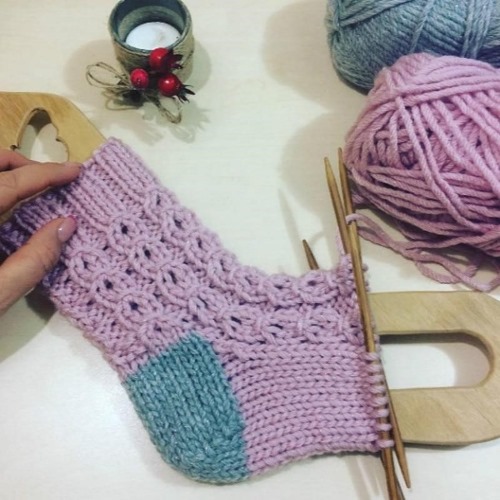
When knitting such items, it is important to secure threads of different colors, without leaving any loops on the back side - so that the child does not catch on them.
Socks with a pattern
All patterns are knitted with the garter stitch, alternating threads of different shades.
Due to the small size of the product, it is worth choosing simple, recognizable images:
- New Year elements (snowflakes, sleds, snowmen, Santa Clauses);
- fruits (strawberries, cherries, apples, citrus fruits, watermelon);
- animals (cat, dog, hare, mouse, duck, chicken);
- favorite toys (car, ship, doll, house, shovel, bucket);
- cartoon characters.
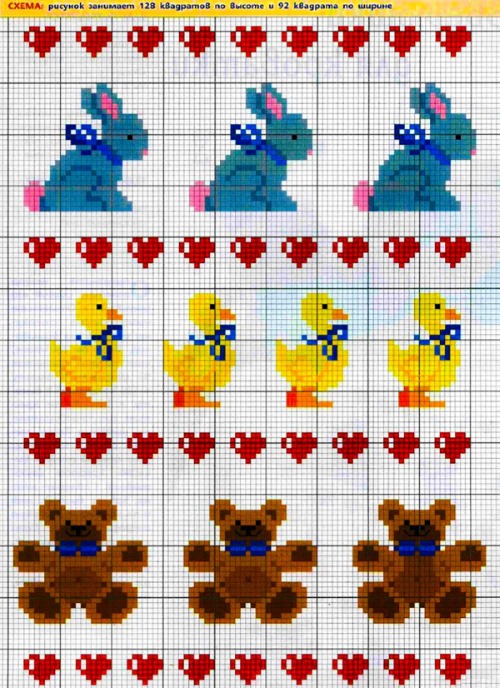
It is better to place the patterns on the bootleg or the instep. It is not always possible to knit beautiful socks with knitting needles (with cartoon character patterns) due to the lack of a suitable pattern.
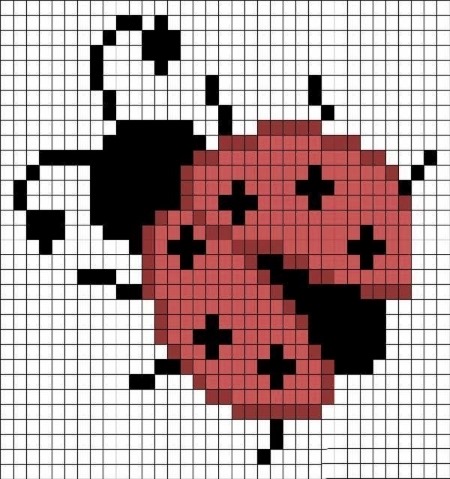
In this case, it is worth using embroidery patterns. An interesting solution would be to stylize the entire sock as some object, creature (fruit, animal, cartoon character).
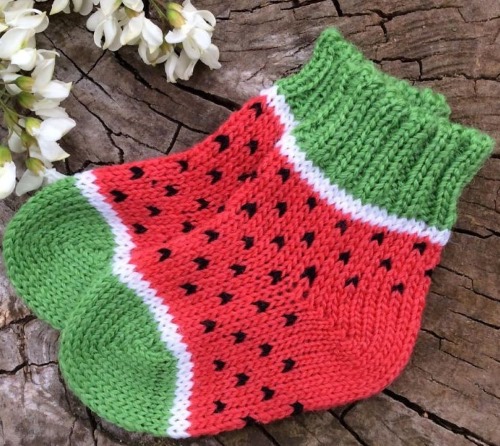
The braid knitting method can be used to make a watermelon sock:
- You will need 3 colors of thread (red, green, white).
- The entire sock (except for the cuff and the bowl) is knitted in red stockinette stitch with black dots (alternating in front rows: 1 st black - 2 sts red, 1 st black).
- The cuff and toe are green. At the end of the cuff and at the beginning of the toe - 2 rows of white stockinette stitch.

Strawberry socks are made in a similar way. The difference is in the white dots and the absence of white stripes.
Knitted socks with geometric pattern
Geometrical figures (stripes, crosses, check marks, circles, diamonds) are suitable for decorating children's socks. They are easier to knit than drawings.
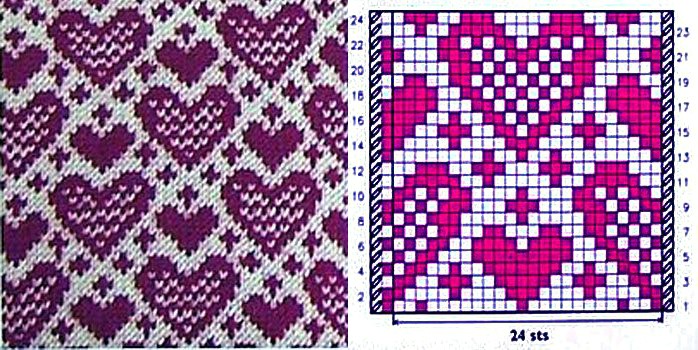
In addition to various geometric patterns, the following designs can also be used for decoration:
- harnesses (braids);
- diamonds;
- squares (chess);
- zigzags.
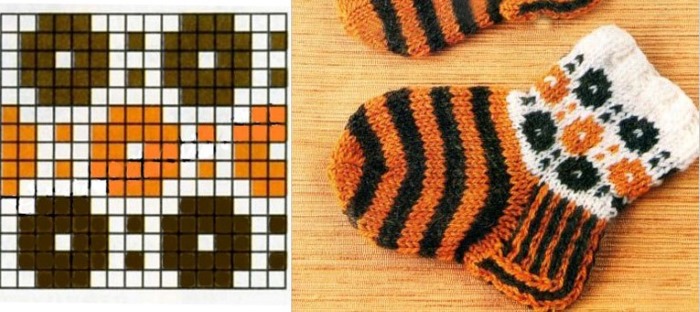
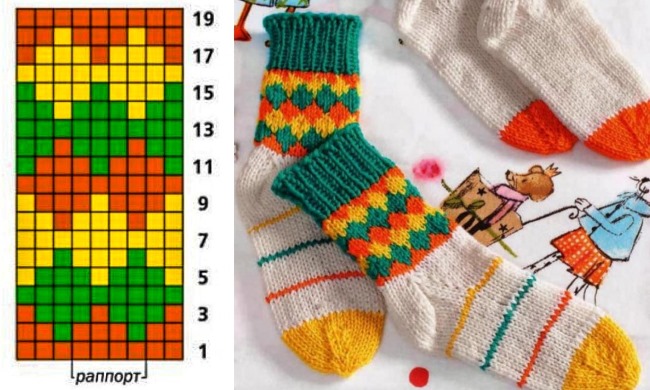
You shouldn't knit the heel with them (it's better to use a satin stitch or another simple pattern). At this point they become deformed and quickly tear.
Knitting patterns for socks
Not every pattern is suitable for knitting children's socks with knitting needles.
When choosing, it is worth considering the following features:
- If the patterns stretch, the socks will fit your legs better.
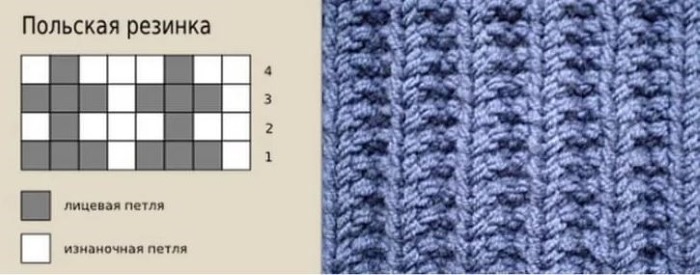
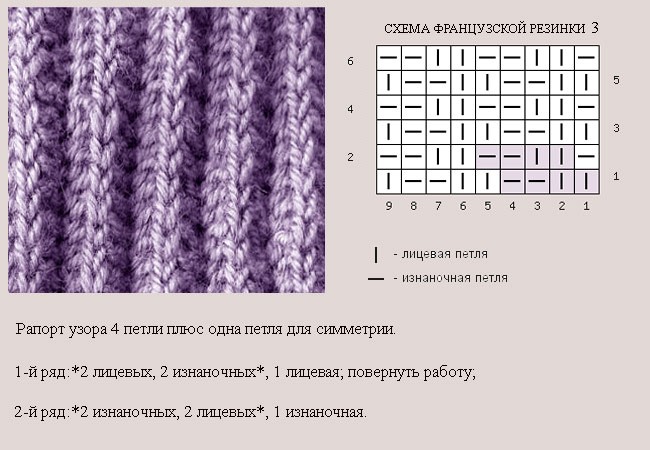
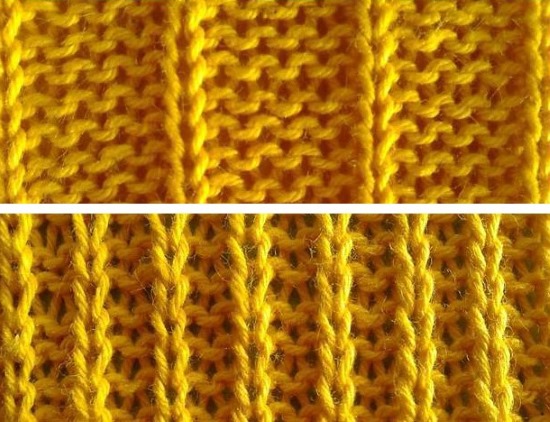
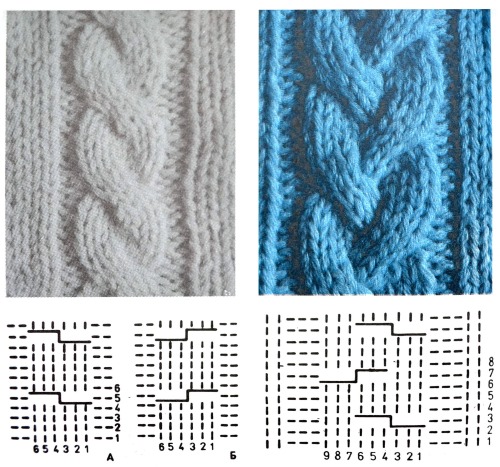
Preference is on the side of “rubber bands” (“1x4”, “1x2”, “Polish”, “French”), options with bundles.
- Geometric patterns should not be too convex.
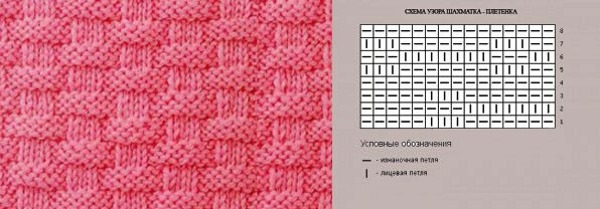
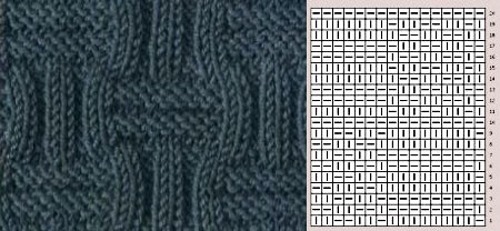
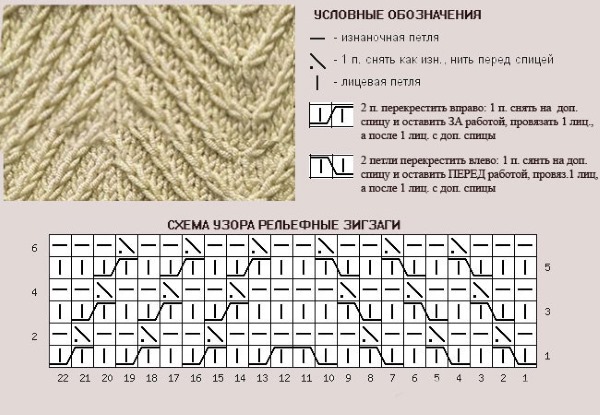
Good are checkerboard patterns (“triple”, “braid”), “relief zigzag”, diamonds (“voluminous”, “waffle”).
- Openwork patterns should not contain elements that the baby will cling to. They should not be used on the sole, toe and heel (they will deform or break).


“Openwork diamond umbrellas”, “openwork checkerboard”, and “openwork stripes” have proven themselves well.
- It is better to knit complex patterns on double-pointed needles, simpler ones - in any convenient way.
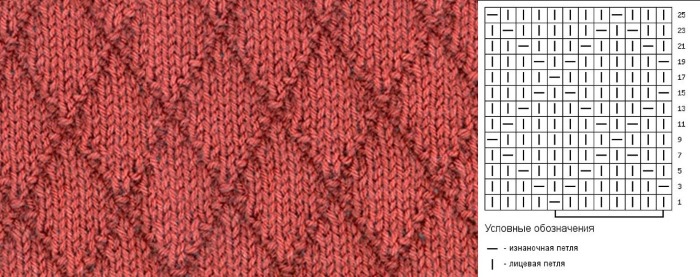


Knitting beautiful socks with knitting needles is easy. The main thing is to correctly calculate the number of loops, choose patterns for work and understand the schemes. The rest is a matter of technique.
Article formatting:Natalie Podolskaya
Video about knitting socks
Openwork beautiful socks with knitting patterns - in this video:

Class!!!!!
Strange left to right pattern. Usually knitting patterns are read from right to left.